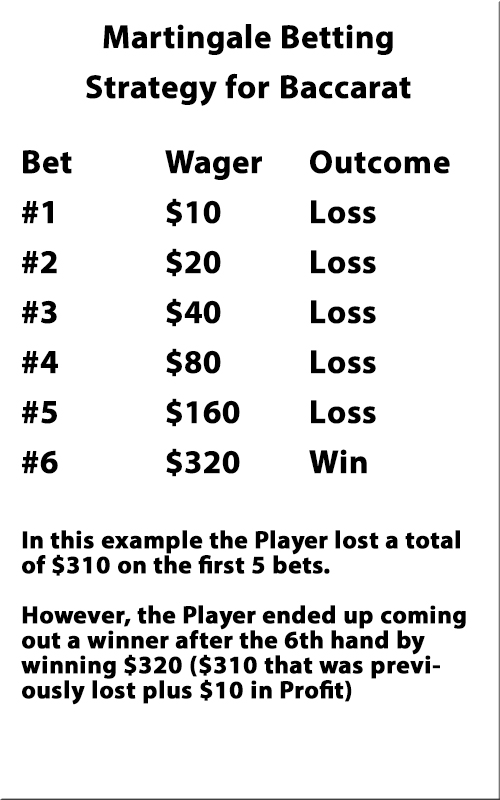Martingale Gambling
Jun 02, 2020 The Martingale betting system has been around since at least the 18th century. Legend has it the Martingale system is named after John Henry Martindale, a London casino owner who allegedly used the strategy in the 1700s. Accurate spelling of his last name was apparently lost in translation over the years as Martindale became Martingale. 8 strengths and weaknesses of Martingale Gambling Strategy 1. You can try out the classic martingale. This means that you should bet on a certain color since the gambling system doesn’t get any simpler than that. There are 18 numbers to choose from, and two colors – black or red. Place the lowest amount of money on your preferred color. In this article, we’ll cover everything you need to know about the Martingale betting system. First, we’ll have a look at the differences between betting systems and betting strategies.Knowing the differences, you’ll understand the limitations which are inherent to the Martingale system and all other betting.
Does the Martingale Betting System Payoff?
The Martingale Betting System was developed in 18th century France. It was actually part of a group of betting methods that were classified as “martingale.” Today, Martingale refers to a relatively simple sports betting system that dictates when you win a wager, you bet the same amount on the next wager, but when you lose a bet, you double your next wager.
Some sports gamblers swear by this methodology while sharp sports bettors that understand the math feel that it’s an example of poor money management practices. The fact that this system is still practiced and marketed today says more about the state of a losing gambler’s mind and less about the success or failure of the system. Here’s how it works.
First, it’s important to know that the system is designed for even wagers, which are thought to hit about 50% of the time. A bettor with a bankroll of $500 puts $50 on an early afternoon football game. The bet is lost. Under the Martingale System, the gambler now places $100 on the late afternoon game. If the bet is won, the theory is that the gambler makes back the original loss, plus a $50 profit. Once the bet is won, the bettor goes back to wagering $50 per game until they lose again.
The problem with this system is that it can put a bettor’s bankroll in jeopardy quickly. What if in our example the late afternoon wager is lost too. Now the bettor has to put $200 on the Sunday night contest. If that game is a washout, the gambler’s bankroll has gone from $500 to $150. And with that, the true problem with Martingale comes into focus. There’s only $150 left in the bank, but under Martingale the wager is supposed to be $400. Martingale has all but bankrupt the gambler’s bankroll.
The Martingale System
Of course, it’s not as big a dilemma if the original wager was $20, which is a wiser wager if you’ve got a $500 bankroll. Still, even at 20 bucks per pop, using this system the gambler is down $80 after three loses and is due to wager $160 on the Monday night game. If they lose that bet, their bank is down to $260. According to Martingale, the next bet should be $320 and, once again as in the previous example, the money is not there.
What most amateur sports bettors dont understand is how odds work from a mathematical perspective. Did you know that a 50% handicapper will lose 5 games in a row 3% of the time? Eventually the math will catch with the Martingale system and the player will be broke.
Martingale is seen as being a regressive form of wagering where bettors play conservatively when they are on a roll and go for the sky when they are in a tailspin. It’s based on the belief that a string of loses on even odds wagers means that eventually there will be a win to correct the deviation. But this idea that wins and loses even out, which is known as the Gambler’s Fallacy, is illogical for one primary reason—it supposes that our four bets are interrelated, and they are not. Whether one wins or loses the first wager will have no influence on the second and the outcome of the second in no way has any influence on the third outcome. If there is no correlation in the bets the order of wins and losses is controlled by variance, something that no gambler has control over.
The application of any system in sports betting tends to be tenuous. Why? Success in gambling on sporting events is based on solid sports handicapping analysis, expert information and insider insights. A gambler’s ability to utilize all of the information available to them to make the right pick will determine an individual’s rate of success or failure and not some theory regarding odds correction based on probability. If you do practice the Martingale Betting System do so with care.
The Martingale System was designed as a way to recoup losses and progressively build a bankroll. However, it is an incredibly risky strategy, as it requires you to place progressively larger bets each time you lose.
If you lose several bets in a row, you could wipe out a bankroll that would otherwise be more negligibly affected if you bet a fixed amount each time.
Each time you win, you place a standard bet amount. But if you lose, you double your next bet to cover the lost bet. And if you lose again, you double your bet again, and on and on until you win again. The only problem is that you can very easily go through an entire bankroll before another win occurs.
That’s why this system is incredibly dangerous and should not be used.
Gaming Today Martingale Calculator?
What Is The Martingale System?
Martingale betting is most commonly used for double or nothing casino bets, such as standard blackjack, outside bets on roulette, or betting the pass line on Craps. This simplifies the method to its most basic form.
For example, if you’re playing roulette, bet $10 on red, and lose, you’d be $20 on the next spin to recoup the lost bet. If you lose again, you’d double that again and bet $40. At this point, you’d lost $30, but if you win with a $40 double or nothing bet, it was like you won that first $10 bet.
You then return to $10 betting, and you repeat the method if you lose again.

The serious problem is that even at +100 (double or nothing) odds, there are going to be times that you go on 10 and 15 game runs and lose each one.
Let’s say you start with $10 and you continuously lose. With the Martingale System, this is how your bets (and losses) would break down, starting with the first bet:
- $10 ($0)
- $20 ($10)
- $40 ($30)
- $80 ($70)
- $160 ($150)
- $320 ($310)
- $640 ($630)
- $1280 ($1,270)
- $2,560 ($2,550)
- $5,120 ($5,110)

Martingale Betting Method
Within ten consecutive bets using the Martingale Strategy, you can be out $5,110 despite only starting at $10. And, if you do end up winning that 11th bet, you’re simply compensating for doing the Martingale Strategy to make back that initial bet.

Put another way, if you had $5,120 in your bankroll, started betting at $10, lost ten in a row, then won the 11th bet, you’d have $5,130 in your bankroll.
In the sports betting world, that means even a 60% bettor could go from a comfortable loss to missing rent in a matter of days.
What Is A Martingale Calculator?
With sports betting, it may seem more feasible to recoup your losses by placing smaller bets. The problem is that the longer the odds, the lower the likelihood of winning. It may be possible to place a $100 bet on +5120 odds and make $5,120 in one go, but the chances are extremely low, thus the higher potential payout.
However, sports betting very rarely offers double or nothing odds. The closest is usually the standard points spread odds of -110. That means if you place a $110 bet, you win $100.
The standard -110 sports bets are actually similar to betting on black or red on roulette because there are one or two green pockets on the roulette wheel. If the ball lands in a green pocket, all outside bets (including black or red) lose. That’s the casino’s house edge, and that extra 10 is the sportsbook’s version of that. (It’s just called the “vig” rather than the house edge.)
For long-term use of the Martingale System, your best bet (other than using an entirely different strategy) is to focus on those -110 payouts. This will ensure that you’re getting the same payout potential each time you place a bet.
Looking for other calculators to use when sports betting? Check out:
Martingale Gambling Chart

Martingale Gambling Strategy
How To Use A Martingale Calculator To Place A Sports Bet
If you do decide to use the Martingale System, this calculator will help you determine the size of your next wager based on the odds of the bet and the amount in losses that you’re trying to recoup.
The calculator is most helpful when you’re dealing with inconsistent odds. For example, if you bet $100 on a -110 bet, you could technically make up those losses with a $10 bet on odds of +1000 or longer.
But even still, the imperfect -110 means that the math can get a bit complicated unless you’re starting with $11 (or $110, but that could mean losing over $50,000 in just a ten-game losing streak).
To use the Martingale Calculator, simply enter the amount of your most recent bet, the total losses you are facing, and the American odds on your upcoming bet. It will return the expected stake for the next bet.
Why The Martingale System Is Risky
The Martingale Calculator will both help you calculate your stake (bet amount) when using the Martingale system, and also, hopefully, convince you to NOT USE THE MARTINGALE SYSTEM. There are a number of ways to debunk the viability of the system, but the most important one is that it only works if you have an unlimited bank account.
The Martingale System was designed in a way to progressively build a bankroll…if you are winning. Each time you win you place a standard bet, like the units size discussed in bankroll management, but each time you lose you up your bet amount to cover your previous losses to get you back to your previous high.
The Martingale calculator helps you calculate what your next bet should be after a loss. The serious problem is that even at+100 odds there are going to be times that you go on 10 and 15 game runs and each time you lose. That easy math on that is that if you lose $10, you should bet $20 to return to your previous balances. If you lose that bet, you are now down $30. The bet after that, you are our $60, $120, $240, $480, $960, $1920, $3840. In just 10 bets, even a 60% bettor could go from a comfortable loss to missing rent.